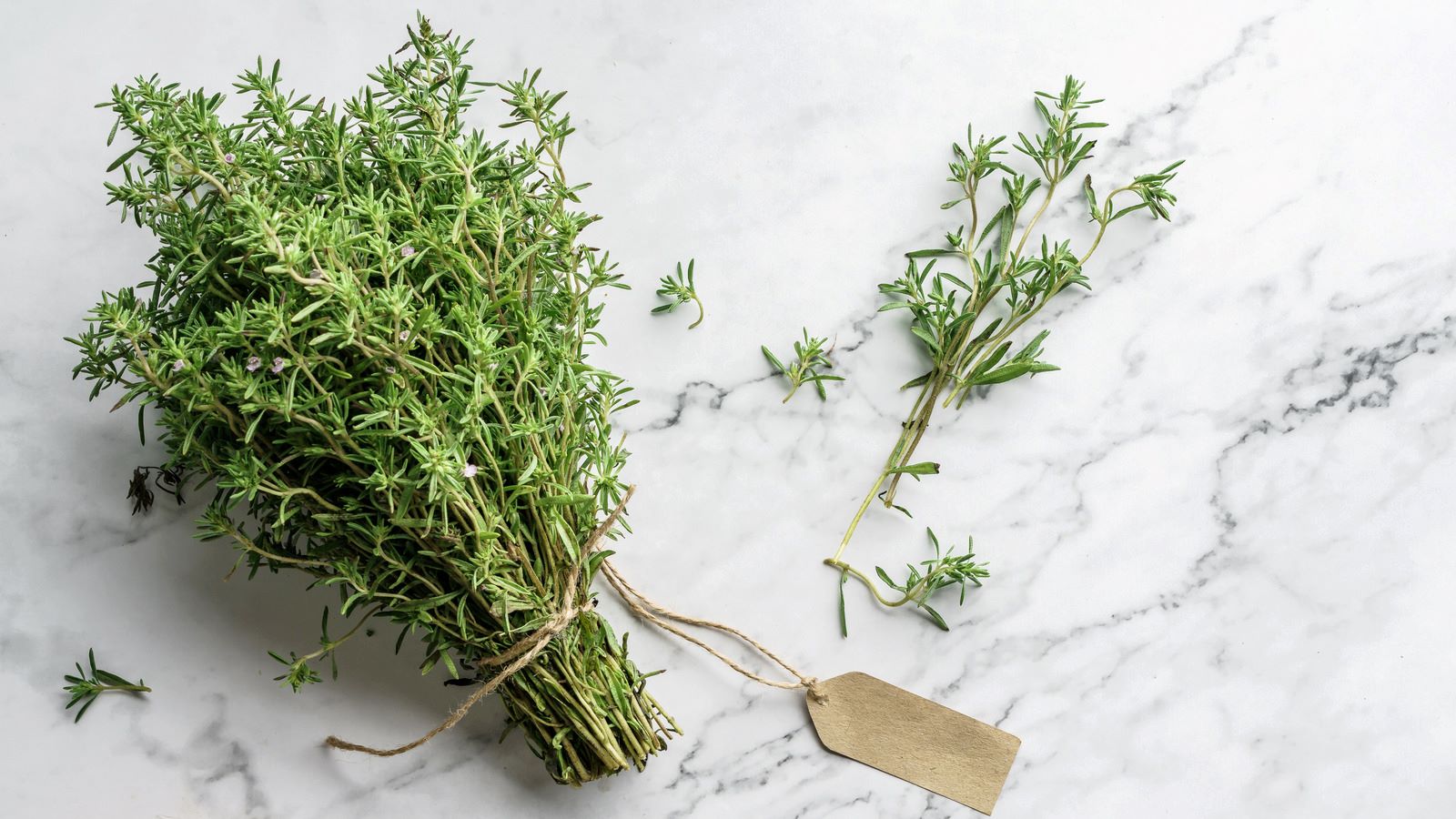

Articles
How To Store Fresh Thyme
Modified: April 22, 2024
Discover the best ways to store fresh thyme with our informative articles. Learn how to keep this aromatic herb fresh for longer and enhance your culinary creations.
(Many of the links in this article redirect to a specific reviewed product. Your purchase of these products through affiliate links helps to generate commission for Storables.com, at no extra cost. Learn more)
Introduction
Fresh thyme is an aromatic herb that adds a delightful flavor and fragrance to a wide variety of dishes. Whether you grow your own thyme or buy it from the market, knowing how to properly store it is essential to maintain its freshness and flavor. In this article, we will explore different methods for storing fresh thyme so that you can enjoy its delicious taste for longer periods.
Thyme is a versatile herb that is commonly used in Mediterranean, Middle Eastern, and European cuisines. It has a distinct earthy and slightly minty flavor that pairs well with meats, vegetables, sauces, and even cocktails. When using fresh thyme, it is crucial to store it correctly to ensure that it retains its potent aroma and taste.
Proper storage not only helps to preserve the flavor of fresh thyme but also extends its shelf life. By following the methods outlined in this article, you can make the most of your thyme and avoid wastage.
From storing fresh thyme in the refrigerator or freezer to preserving it in oil or drying it, there are various techniques you can utilize based on your preference and cooking habits. Each method has its own unique advantages and considerations, so let’s delve into the details and explore how to store fresh thyme effectively.
Key Takeaways:
- Properly storing fresh thyme is essential to maintain its flavor and aroma. Choose from refrigeration, freezing, oil infusion, or drying to extend its shelf life and enhance your culinary creations.
- Whether you prefer convenience, extended shelf life, infused flavors, or classic charm, there’s a method to store fresh thyme that suits your cooking needs. Trust your senses and enjoy the delightful taste of fresh thyme in your favorite recipes.
Read more: How To Store Fresh Rosemary And Thyme
Choosing and Buying Fresh Thyme
When it comes to selecting fresh thyme, there are a few key factors to consider to ensure you get the best quality herb. Here are some tips to help you choose and buy fresh thyme:
- Appearance: Look for fresh thyme sprigs that are vibrant green in color. Avoid any wilted or yellowing leaves, as this may indicate that the herb is not fresh.
- Fragrance: Give the thyme a gentle squeeze to release its aroma. Fresh thyme should have a strong, aromatic scent. If it lacks fragrance or has a musty smell, it is best to choose another bunch.
- Texture: The leaves of fresh thyme should be pliable and not brittle. Gently run your fingers along the sprigs to ensure they are firm and resilient.
- Organic and locally sourced: If possible, opt for organic thyme to avoid any exposure to pesticides. Additionally, buying locally sourced thyme can ensure its freshness and support local farmers.
When buying fresh thyme, you have the option to choose between packaged or loose sprigs. Packaged thyme is convenient and pre-portioned, while loose sprigs allow you to select the amount you need.
If you are growing your own thyme, harvesting the herb when needed ensures the highest level of freshness. Simply snip off the desired amount of thyme from the plant, and you will have the freshest possible herb to use in your culinary creations.
By carefully selecting and buying fresh thyme, you lay the foundation for storing it properly to maintain its flavor and aroma. Now that you know what to look for in fresh thyme, let’s explore different storage methods to ensure its longevity.
Storing Fresh Thyme in the Refrigerator
The refrigerator is an ideal place to store fresh thyme if you plan to use it within a week. Follow these steps to store fresh thyme in the refrigerator:
- Start by inspecting the thyme sprigs and removing any wilted or discolored leaves.
- Rinse the thyme gently under cold running water to remove any dirt or debris. Pat the sprigs dry with a paper towel or use a salad spinner to remove excess moisture.
- Take a damp paper towel and wrap the thyme sprigs loosely. This helps to retain moisture and prevents the herb from drying out too quickly.
- Place the wrapped thyme in a plastic bag or an airtight container. Make sure to seal it tightly to prevent any moisture loss or absorption of odors from other foods in the fridge.
- Store the thyme in the refrigerator’s vegetable crisper drawer or in the coldest part of the fridge, maintaining a temperature between 35-40°F (1-4°C).
It is important to note that although refrigerating fresh thyme helps prolong its shelf life, it may slowly start to lose its flavor over time. Therefore, it is best to use it within a week to enjoy its full flavor and aroma.
When using refrigerated fresh thyme, simply remove the desired amount from the storage container, reseal it, and return the remaining thyme to the refrigerator. This way, you can keep the rest of the thyme fresh while using it gradually.
Storing fresh thyme in the refrigerator allows you to have readily available herbs for your culinary adventures. However, if you have more fresh thyme than you can use within a week, consider freezing it to extend its shelf life.
Storing Fresh Thyme in the Freezer
If you have an abundance of fresh thyme or want to store it for longer periods, freezing is a great option. Freezing fresh thyme helps to preserve its flavor and aroma. Follow these steps to store fresh thyme in the freezer:
- Begin by rinsing the thyme under cold running water to remove any dirt or debris. Gently pat dry with a paper towel or use a salad spinner to remove excess moisture.
- For convenience and easy access, consider removing the thyme leaves from the stems. Hold the top end of the sprig and run your fingers down the stem to remove the leaves. Discard the stems or save them for making stocks or infusing oils.
- Lay the thyme leaves in a single layer on a baking sheet lined with parchment paper or a silicone mat. Make sure the leaves are spread out and not touching each other.
- Place the baking sheet in the freezer and let the thyme leaves freeze for about 1-2 hours or until they become firm and crispy.
- Transfer the frozen thyme leaves into airtight freezer-safe containers or freezer bags. Be sure to label the containers with the date to keep track of freshness.
- Place the containers or bags back into the freezer, ensuring they are sealed tightly to prevent any freezer burn or absorption of odors.
When you need to use frozen thyme, take out the desired amount and return the rest to the freezer promptly. Since frozen thyme leaves are brittle, you can crumble them directly into your dishes without the need to thaw.
Frozen thyme can retain its flavor and aroma for up to six months or longer. However, the longer it stays in the freezer, the more the quality may gradually deteriorate. Therefore, it is best to use frozen thyme within six months for optimal flavor.
Freezing fresh thyme allows you to extend its shelf life significantly and have a readily available stash of herbs for your cooking needs. However, if you prefer a different method of preservation that allows for easy incorporation into various dishes, consider preserving fresh thyme in oil.
Store fresh thyme by wrapping it in a damp paper towel, placing it in a plastic bag, and storing it in the refrigerator. This will help keep it fresh for up to two weeks.
Preserving Fresh Thyme in Oil
Preserving fresh thyme in oil is a fantastic way to not only extend its shelf life but also infuse the oil with the herb’s aromatic flavors. Here’s how you can preserve fresh thyme in oil:
- Start by washing the fresh thyme sprigs under cold running water to remove any dirt or debris. Pat them dry with a paper towel or use a salad spinner to remove excess moisture.
- Remove the leaves from the thyme sprigs by holding the top end of the sprig and running your fingers down the stem. Discard the stems or save them for other uses.
- Place the thyme leaves in a clean, dry jar or container, leaving some space at the top.
- Pour a neutral oil such as olive oil, grapeseed oil, or avocado oil over the thyme leaves in the jar, making sure that all the leaves are submerged completely.
- Seal the jar tightly and store it in a cool, dark place, such as a pantry or kitchen cabinet.
- Allow the thyme leaves to infuse in the oil for at least 1-2 weeks to develop the fullest flavor. The longer you let it infuse, the stronger the flavor will be.
- After the desired infusion period, you can strain the oil through a fine-mesh sieve or cheesecloth to remove the thyme leaves, or you can leave the leaves in for a more visually appealing presentation.
- Transfer the infused thyme oil into smaller glass jars or bottles, making sure to label them with the date if desired.
Preserving fresh thyme in oil not only adds wonderful flavors to your dishes but also makes a beautiful homemade gift for culinary enthusiasts. Use the infused thyme oil in dressings, marinades, sauces, or simply drizzle it over roasted vegetables for an extra burst of flavor.
It’s important to note that when preserving herbs in oil, there is a risk of bacterial growth if not done correctly. It’s crucial to use fresh, dry herbs and clean, sterilized jars to minimize the risk and ensure food safety. Always store the infused oil in the refrigerator and use it within a month to maintain its freshness.
Preserving fresh thyme in oil is a versatile method that allows you to enjoy the herb’s flavors long after it has been harvested. However, if you prefer a more traditional approach to thyme preservation, hanging it to dry is a classic method that works wonderfully.
Read more: How To Store Fresh Thyme And Rosemary
Hanging Fresh Thyme to Dry
Drying fresh thyme is a traditional method of preserving the herb, allowing you to have a stockpile of dried thyme for future use. Here’s how you can hang fresh thyme to dry:
- Start by gathering a bunch of fresh thyme sprigs and gently remove any damaged or discolored leaves.
- Tie the thyme sprigs together at the stems using a piece of twine or a rubber band. Make sure the bundle is secure but not too tight to allow airflow.
- Find a well-ventilated area with low humidity, such as a dry, airy room or a covered patio, to hang the thyme.
- Hang the thyme bundle upside down from a hook or a clothesline, ensuring that it is suspended freely and not touching any surfaces.
- Leave the thyme to dry for about 1-2 weeks or until the leaves become brittle and crumble easily. The drying time may vary depending on the humidity and temperature of the environment.
- Once the thyme is completely dry, remove the leaves from the stems by gently rubbing them between your hands or by using a fine-mesh sieve or your fingers.
- Discard the stems or save them for making infusions or stocks.
- Transfer the dried thyme leaves to an airtight container, such as a glass jar or airtight plastic bag, and store them in a cool, dark place.
Dried thyme can be used in a variety of dishes, including soups, stews, roasts, and marinades. It has a more concentrated flavor than fresh thyme, so you may need to use less in your recipes.
It’s important to note that when drying thyme, it’s crucial to choose sprigs that are clean and free from moisture. Any moisture left on the thyme during the drying process can lead to mold and spoilage. Additionally, a well-ventilated area is essential to ensure proper airflow and prevent the growth of mold.
Hanging fresh thyme to dry is a simple and traditional method that allows you to have dried thyme readily available for your culinary endeavors. However, whether you choose to dry it or use other preservation methods, storing fresh thyme properly is key to maintaining its flavor and quality.
Conclusion
Fresh thyme is a delightful herb that can elevate the flavors of your dishes with its aromatic and earthy taste. By learning how to store fresh thyme properly, you can extend its shelf life and enjoy its full flavor for longer periods.
Choosing and buying fresh thyme involves considering factors such as appearance, fragrance, texture, and sourcing to ensure the highest quality herb. Once you have your fresh thyme, you can store it in the refrigerator for short-term use or freeze it for longer preservation.
If you prefer to infuse the flavors of fresh thyme into oils, preserving it in oil is a wonderful option. Infused thyme oil can add a burst of flavor to various dishes and can be stored in the refrigerator for future use.
Alternatively, you can hang fresh thyme to dry, allowing you to have a stockpile of dried thyme for your culinary needs. Dried thyme possesses a more concentrated flavor and can be stored in a cool, dark place for an extended period.
By understanding the different methods of storing fresh thyme, you can choose the one that best fits your cooking preferences and needs. Whether you prefer the convenience of refrigeration, the extended shelf life of freezing, the infusion of flavors in oil, or the classic charm of dried herbs, each method allows you to enjoy the aroma and taste of fresh thyme in your favorite recipes.
Remember to properly label and date your stored thyme, whether in the refrigerator, freezer, or pantry, to keep track of its freshness. And always trust your senses when using stored thyme – if it looks or smells off, it’s best to discard it and use a fresh batch.
So, the next time you have fresh thyme on hand, make sure to store it in a way that preserves its flavor and extends its shelf life. With these techniques, you can confidently enhance your culinary creations with the delightful taste of fresh thyme, even long after its harvest.
Frequently Asked Questions about How To Store Fresh Thyme
Was this page helpful?
At Storables.com, we guarantee accurate and reliable information. Our content, validated by Expert Board Contributors, is crafted following stringent Editorial Policies. We're committed to providing you with well-researched, expert-backed insights for all your informational needs.
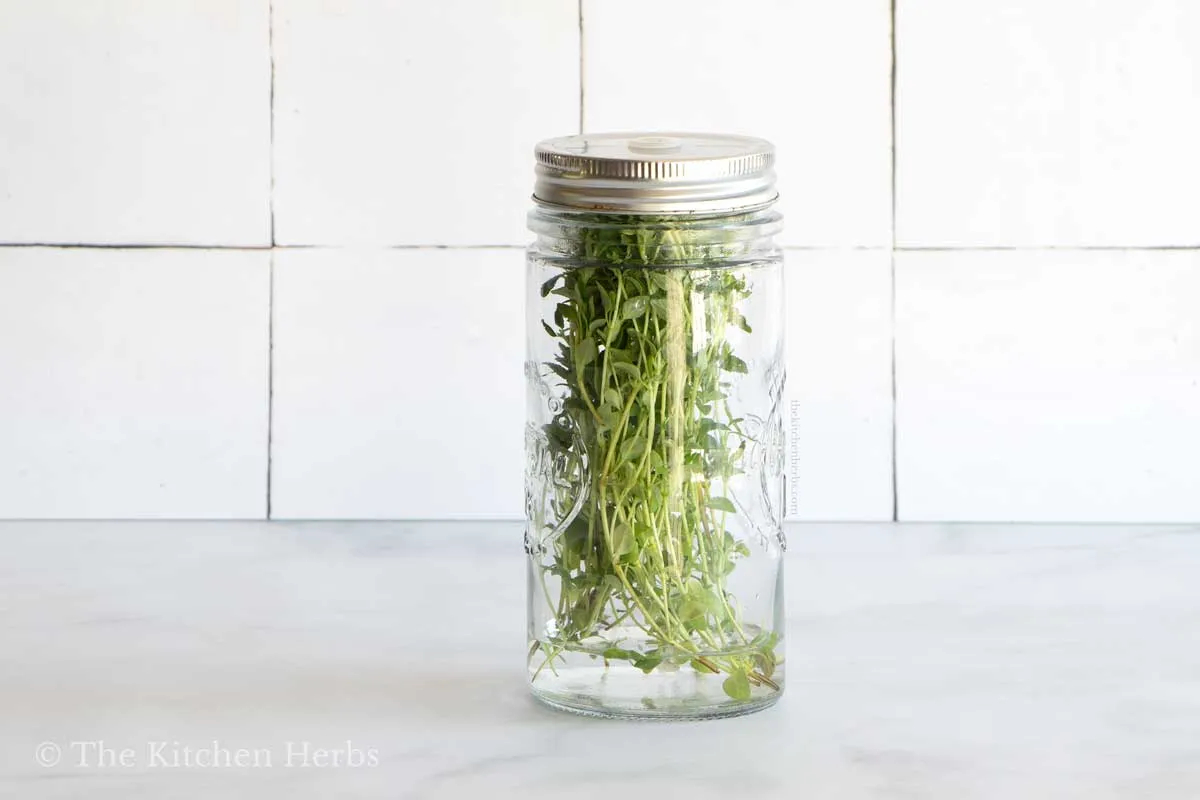
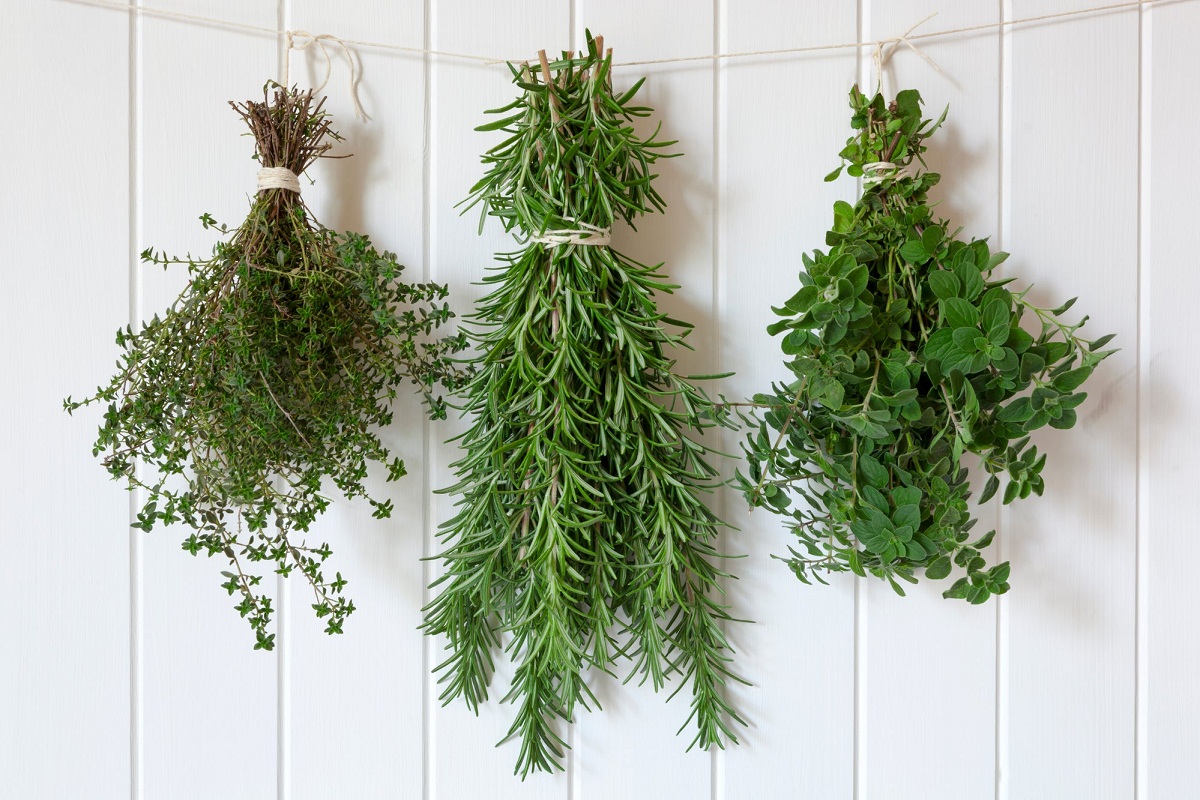
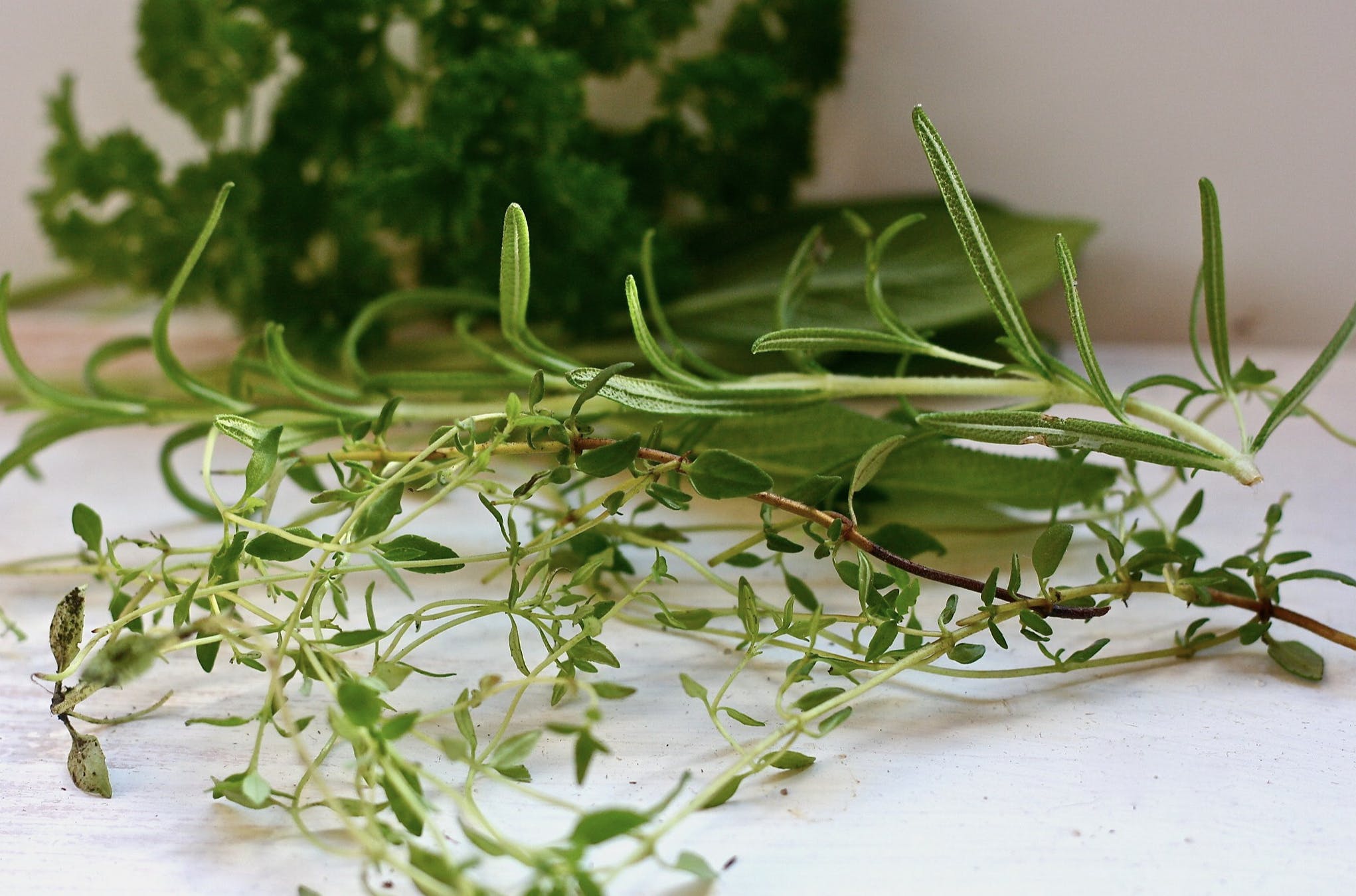
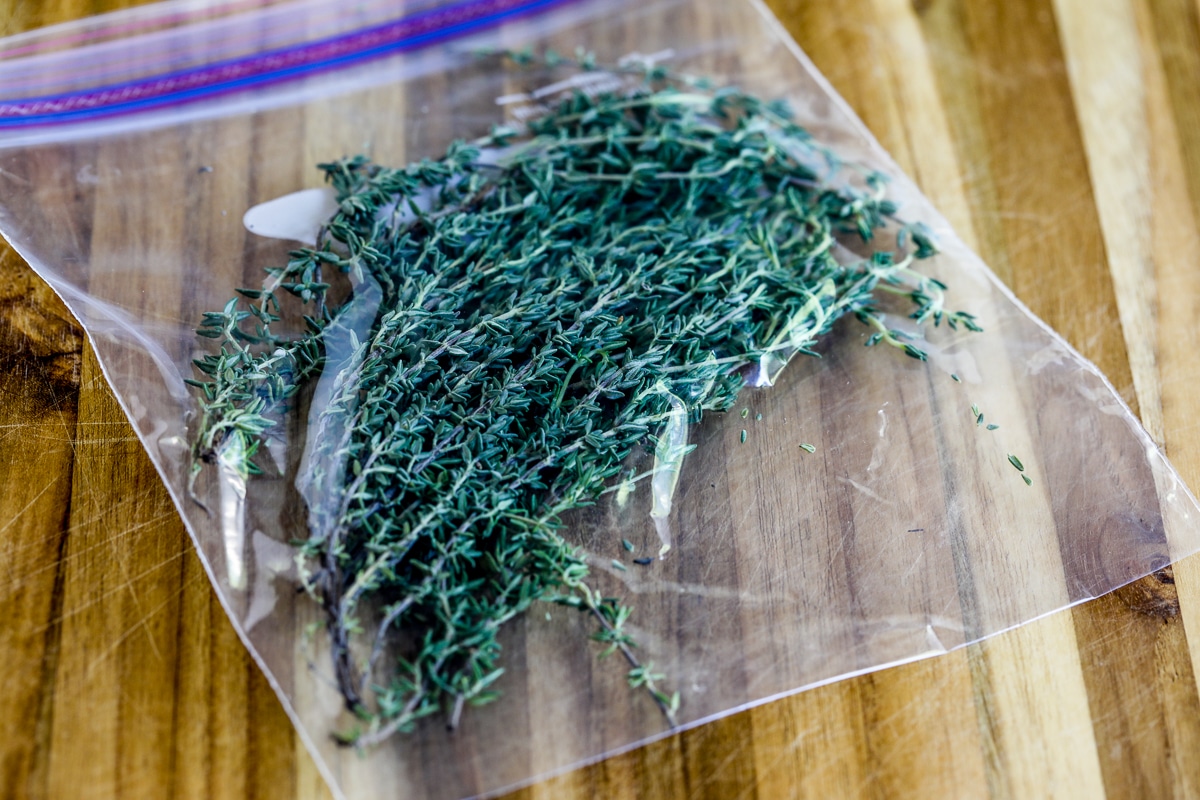
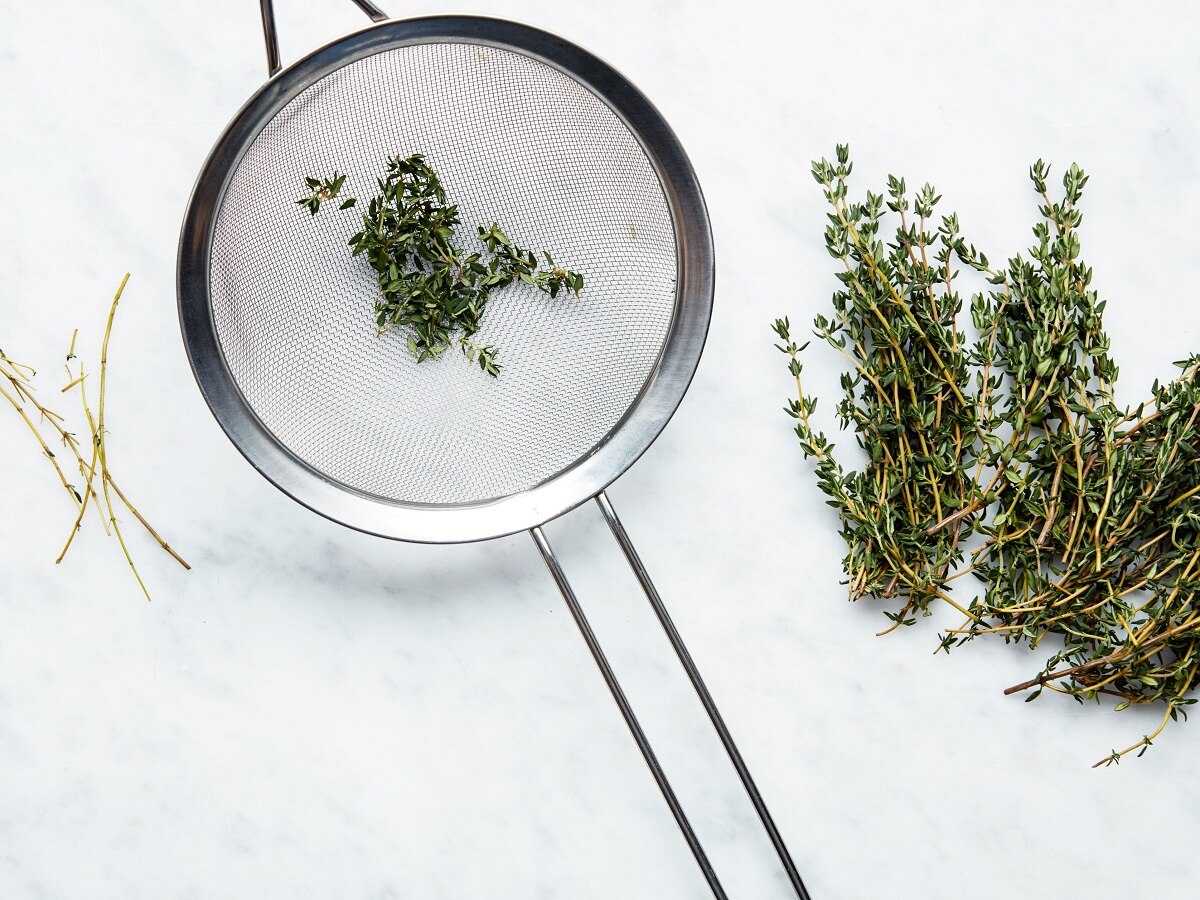
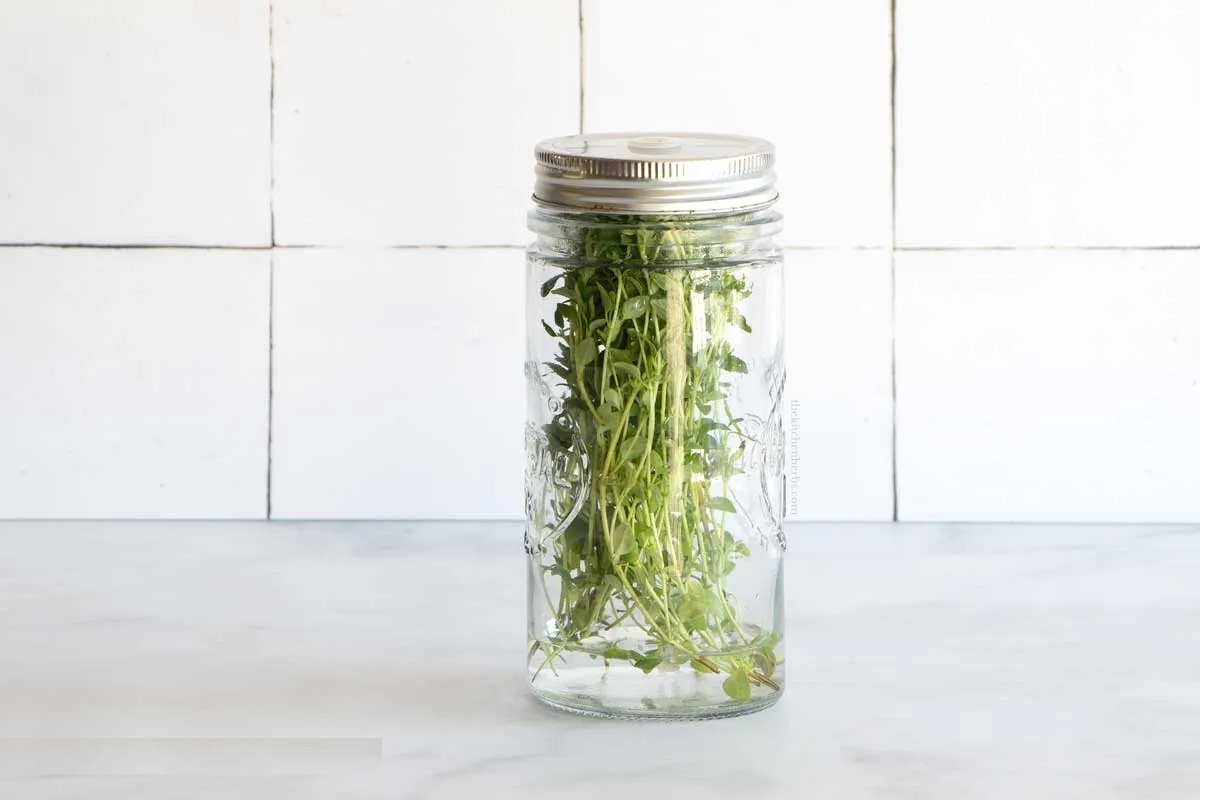

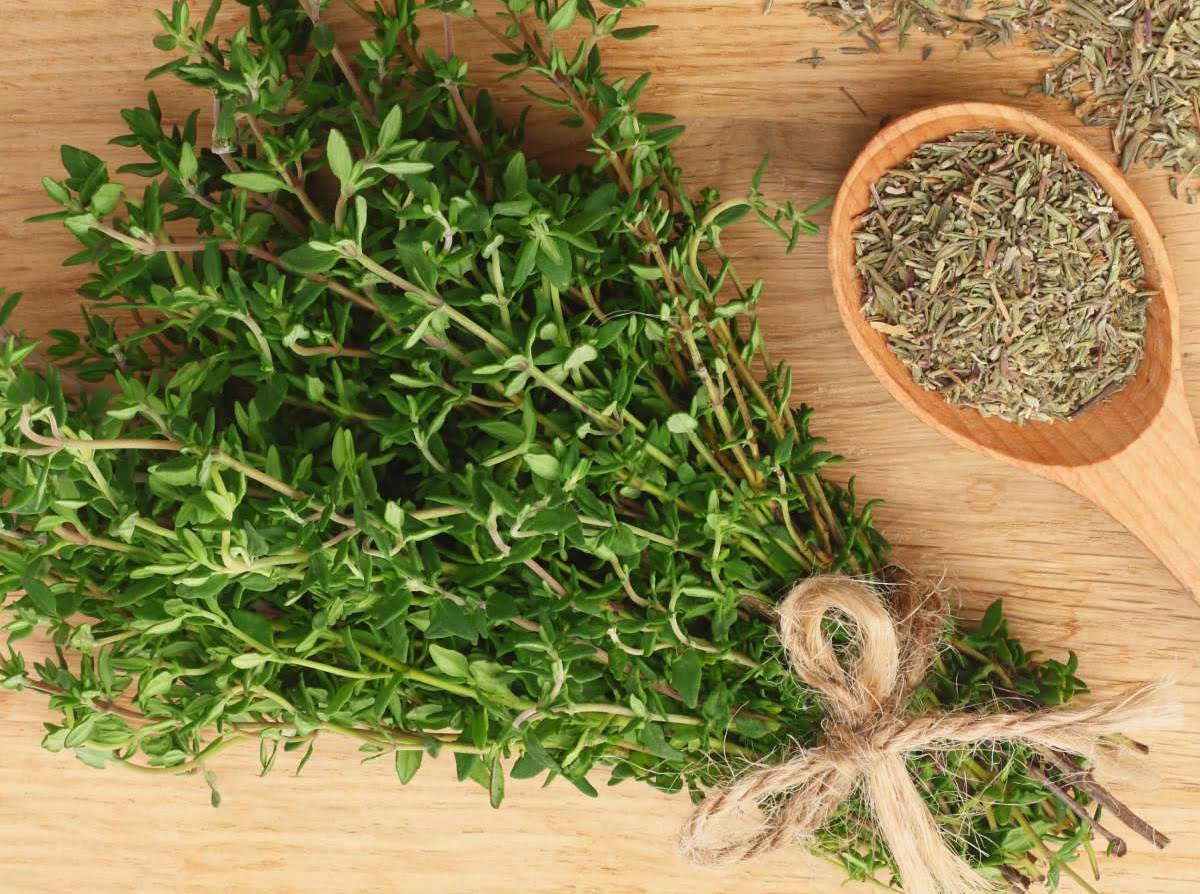
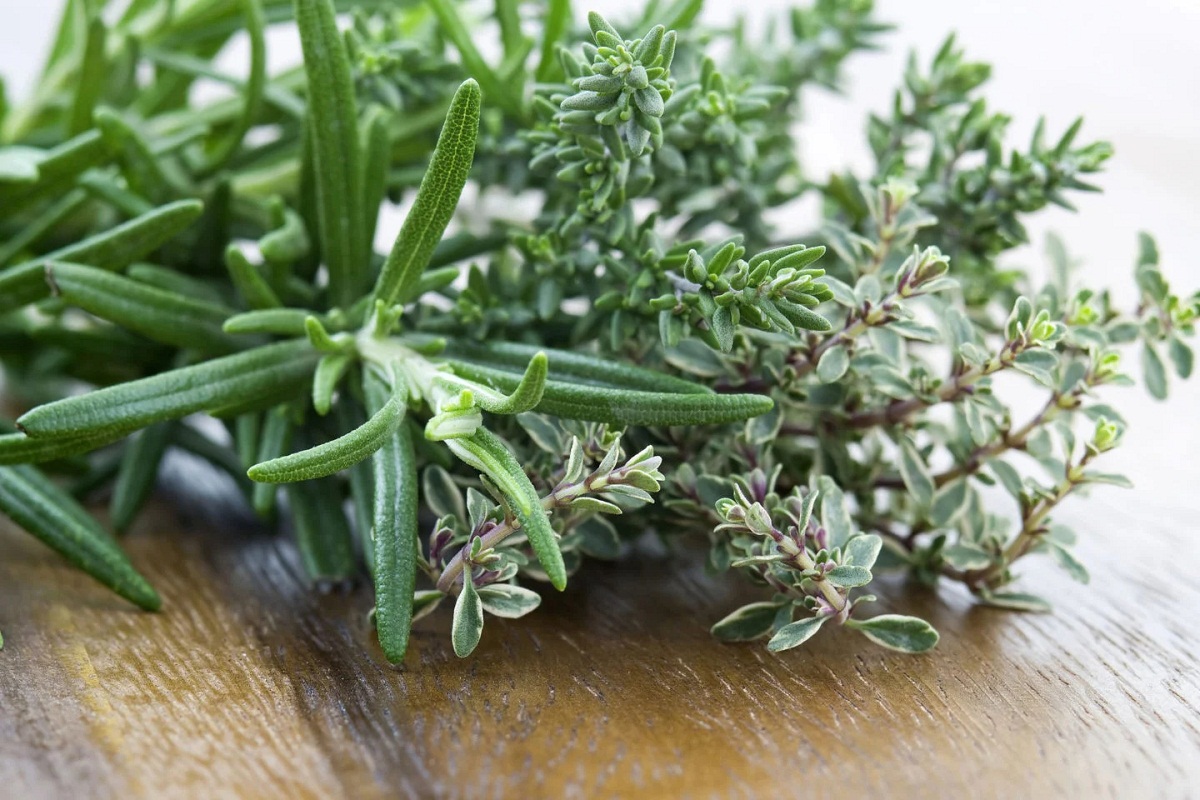
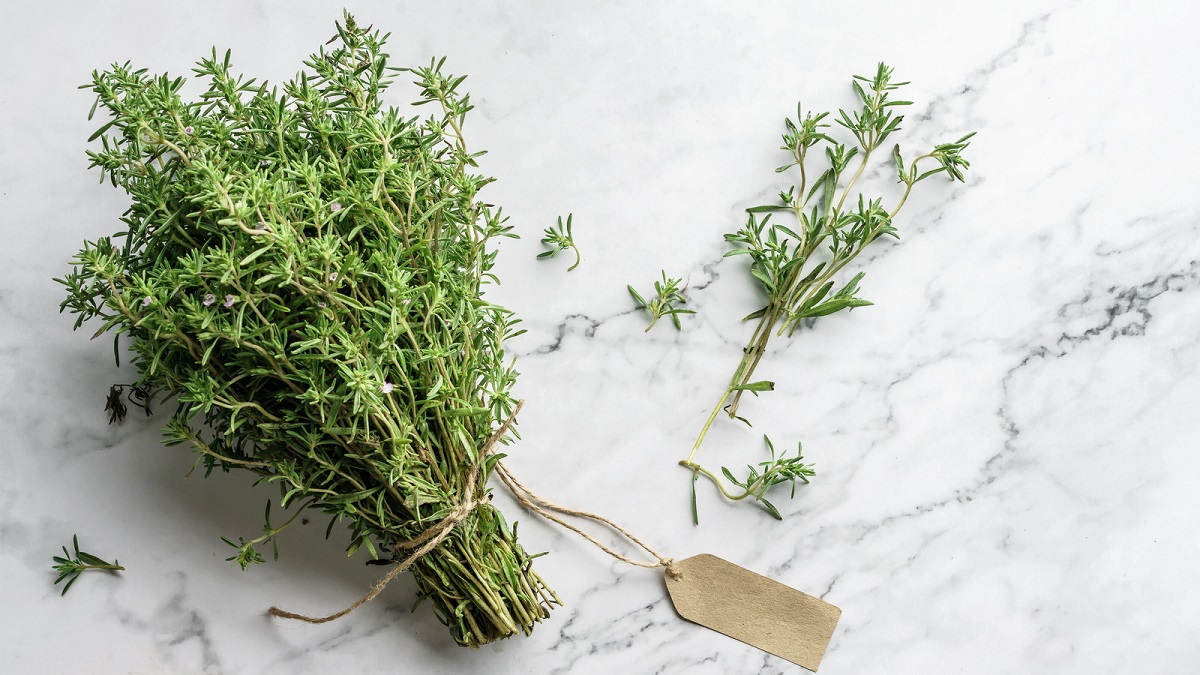
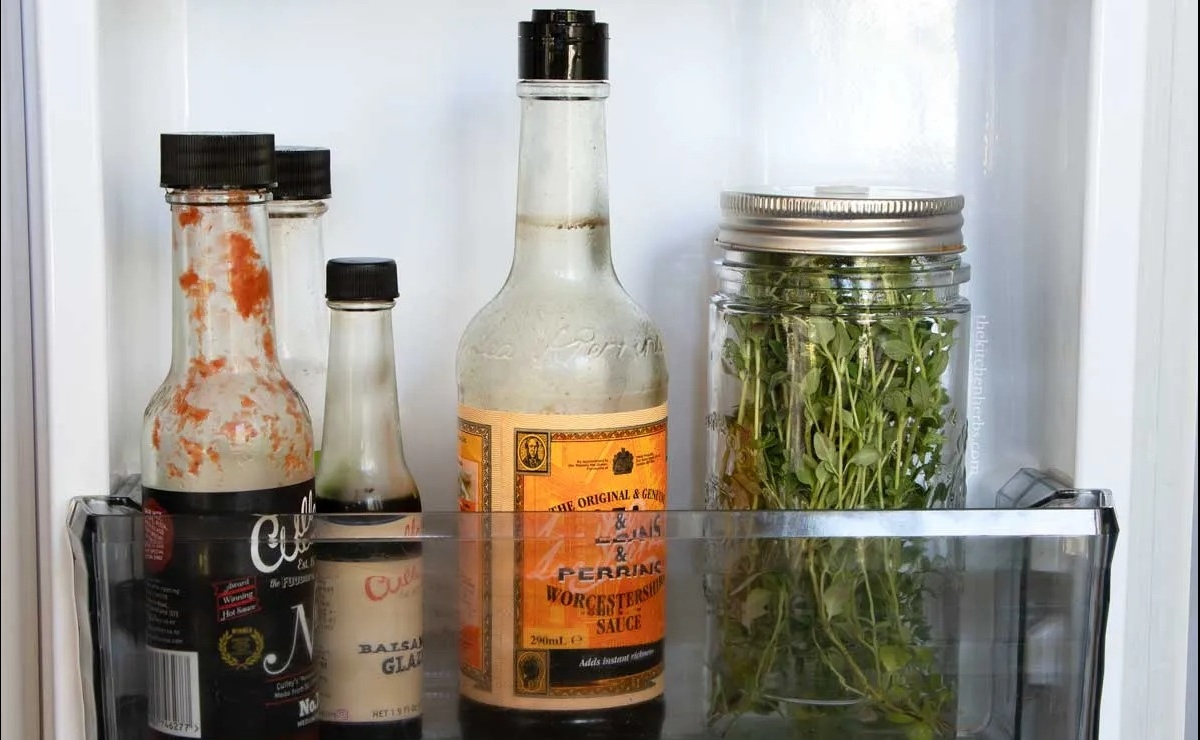
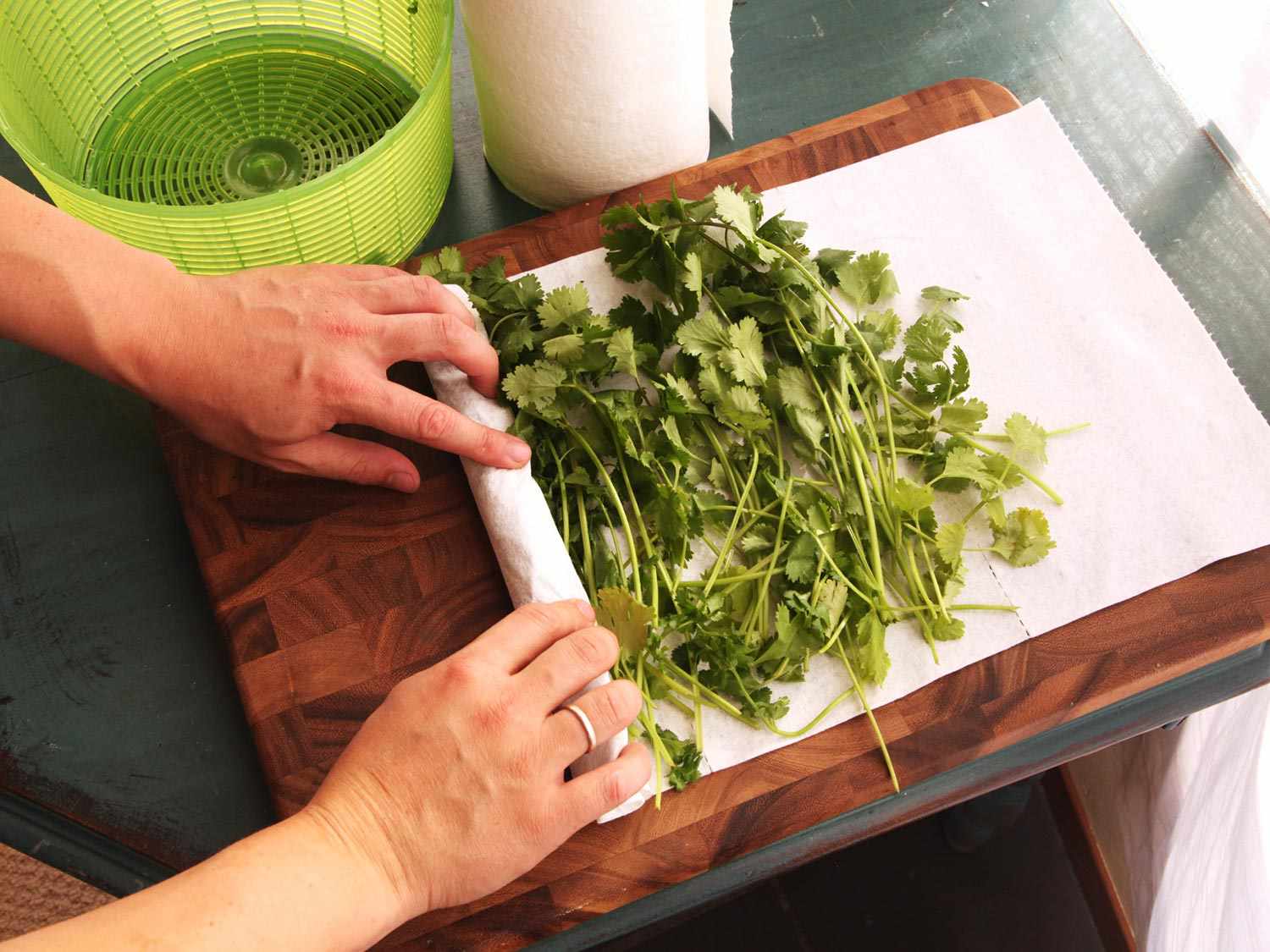
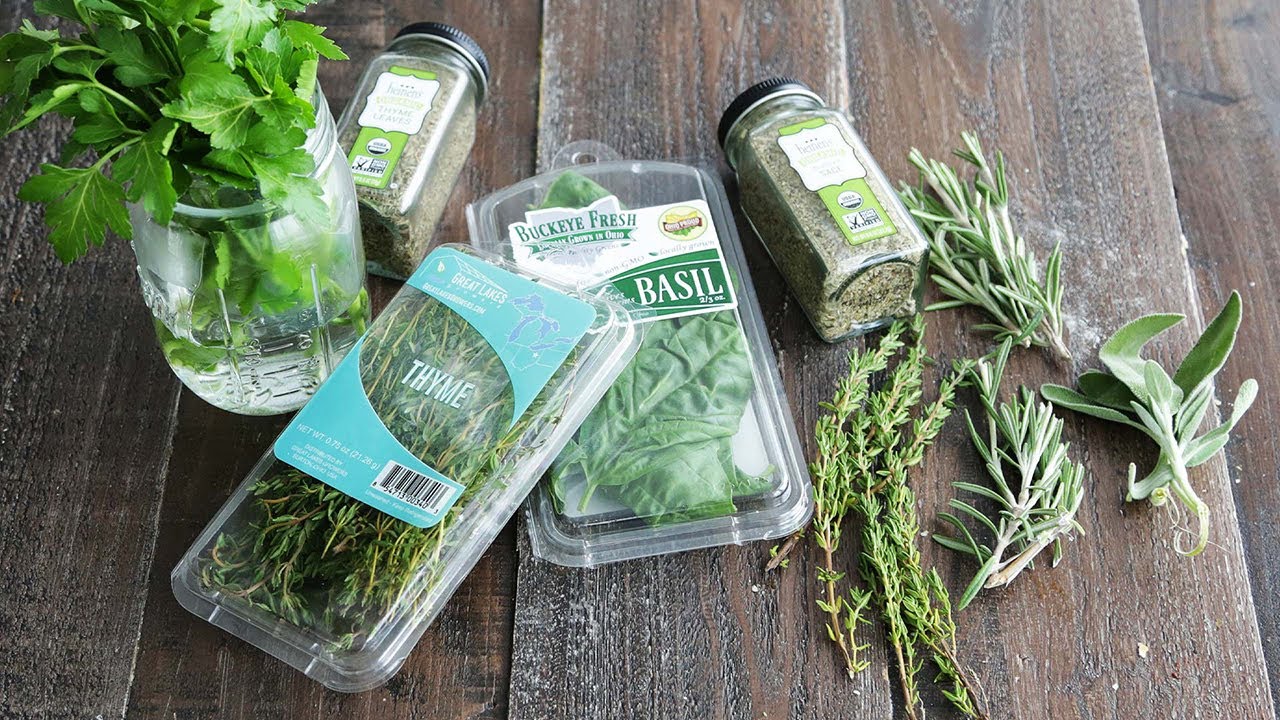
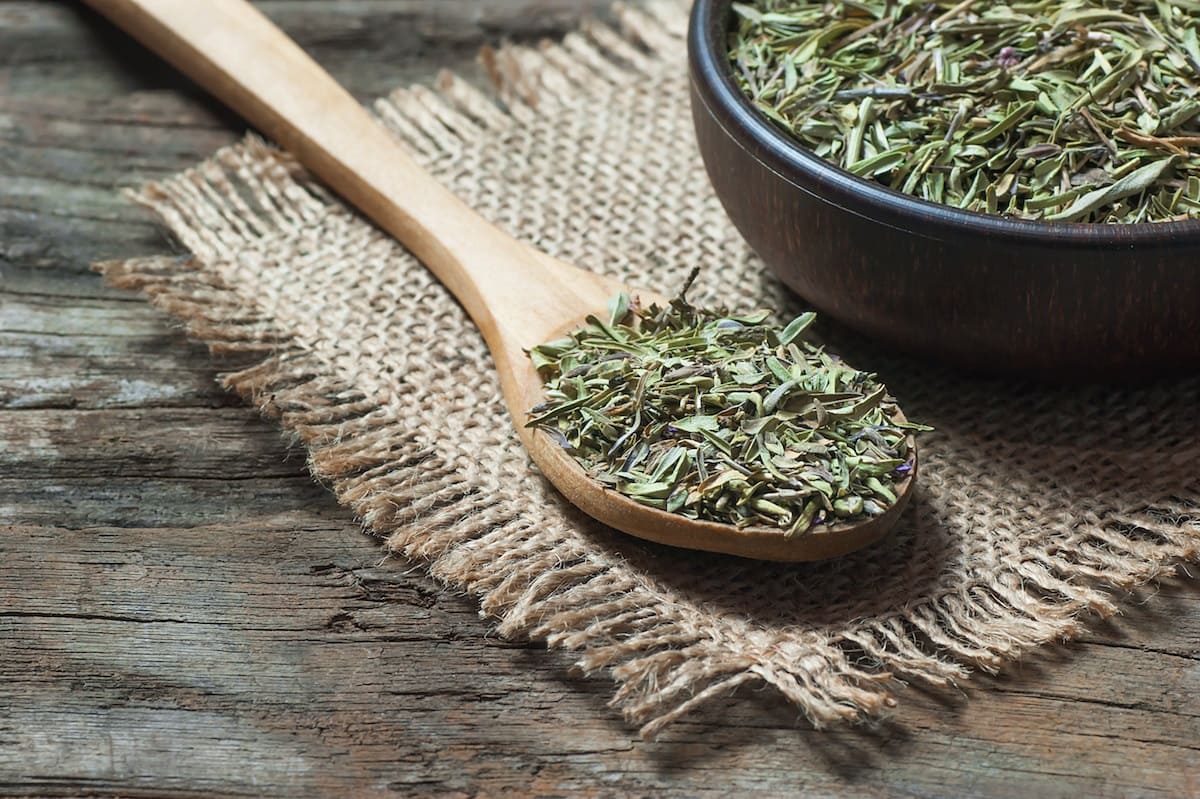

0 thoughts on “How To Store Fresh Thyme”